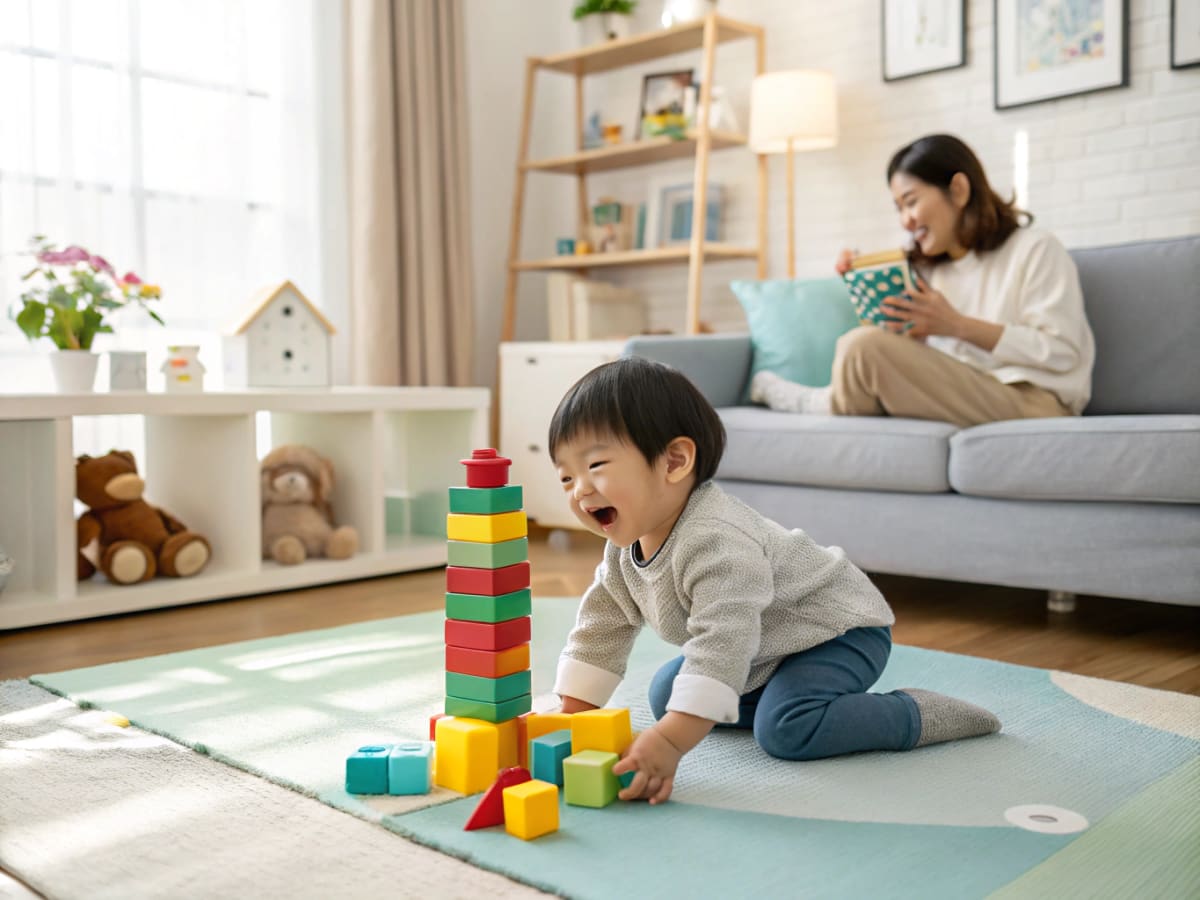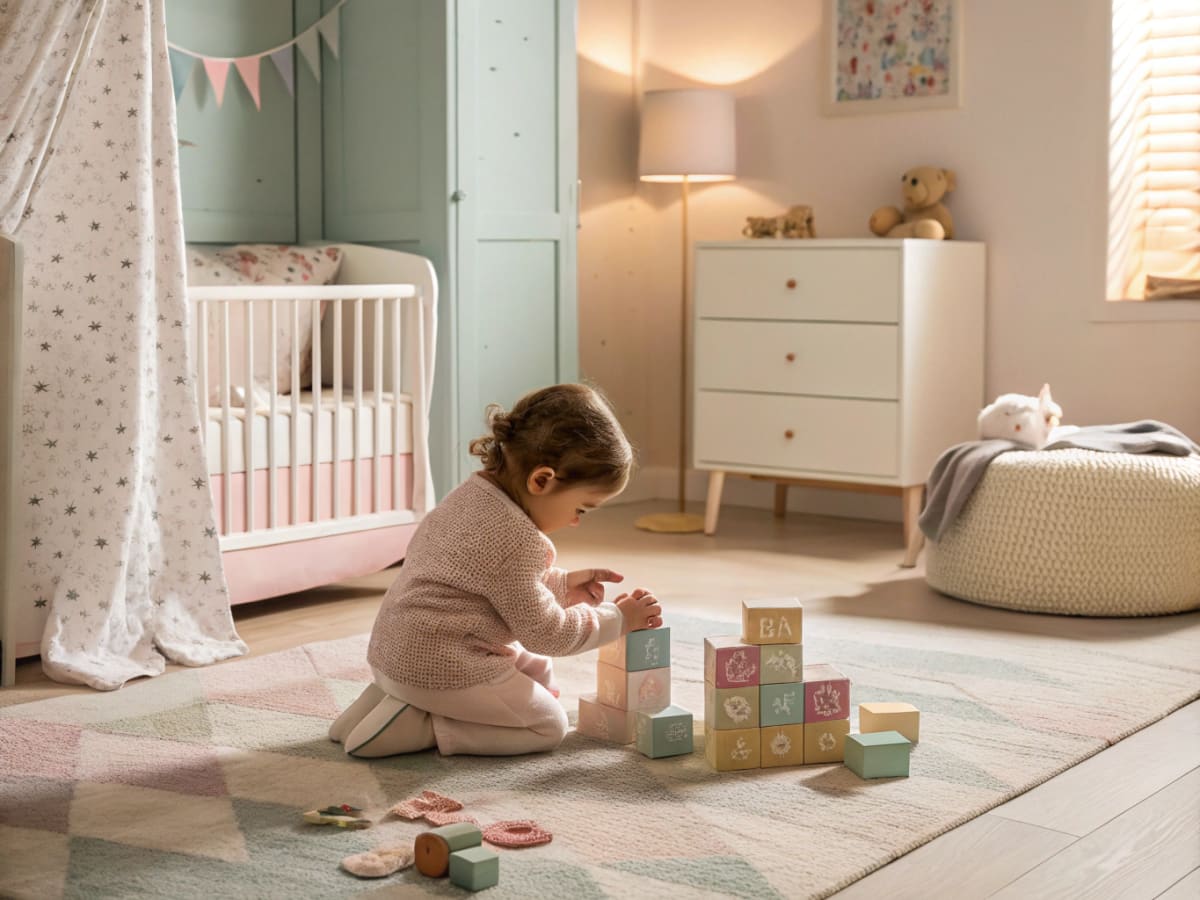
The Golden Key to Our Child’s Brain Development: All About Block Play
What will a child do in front of a few colorful blocks? Initially, they might just hold them and explore or knock them against the floor to make noise. Sometimes, it may seem that crashing towers built by parents is the entirety of the play. You might even worry, ‘Does my child have no interest in blocks yet?’ But that’s okay. All these processes are a very important first step into the child’s world. There are infinite possibilities hidden within what seems like simple block play. Let’s explore this meaningful process together. Please warmly watch over the journey of change that begins with your child’s small hands.
Beyond Simple Stacking Games, What is the Child Learning?
Every moment the child touches, stacks, and knocks down blocks is actually a process where complex brain activities and physical development are taking place. To an adult, it may just appear to be a mundane game, but through blocks, the child is learning the essential foundational abilities to understand the world.
Fine Motor Skills and Hand-Eye Coordination
The process of picking up blocks and placing them precisely where desired requires more precise control than one might think. The child develops fine motor skills by adjusting the force of fingers and wrists according to their will. Furthermore, they naturally enhance their hand-eye coordination by recognizing the position and shape of the block with their eyes and transferring that information to their hands to move accurately. This becomes the foundation for all the intricate activities needed in everyday life, such as holding pencils to write or using a spoon.

Spatial Perception and Seeds of Mathematical Thinking
As children place blocks side by side or stack them high, they acquire spatial concepts such as ‘above’, ‘below’, ‘beside’, ‘inside’, and ‘outside’. They physically grasp mathematical and scientific principles like balance, symmetry, and patterns through wondering, ‘What happens if I place another block on top of this?’, ‘How should I stack them so they don’t fall?’. Block play is a wonderful activity that helps children naturally develop their logical thinking skills.
Block Play Guide Tailored to the Child’s Developmental Stage
Not every child builds castles proficiently from the start. When parents create a play environment and provide support according to the child’s developmental level, the effects of block play can manifest more positively.
1-2 Years: A Time of Exploration and Discovery
For children at this age, blocks are sensory learning tools for exploring the world, besides being tools for stacking. Merely touching blocks of various colors, shapes, and textures, putting them in their mouth, and hearing the sound when they hit will provide enough stimulation. Make a low tower with 2-3 blocks for your child to knock down. Learn the cause and effect through play, similar to ‘peek-a-boo’, and feel the joy. The key is for the child to become familiar with the object that is a block.
3-4 Years: A Time When Imagination Grows
Now, children start to create things with intent. They will make a long train with blocks or arrange them in a square around an animal pen. Interaction that stimulates the child’s imagination becomes important from this point. Say encouraging things like, “Wow, you made a wonderful train! Where is it heading?” Attribute meaning to your child’s creations and have conversations about them. Blocks can become cars or food, serving as tools for freely unfolding their imaginative world.
How Should Parents Help With Block Play?
To enrich your child’s block play time even more, rather than being a ‘teaching instructor’, parents take on the role of a ‘playmate’. Respect the child’s initiative and become a warm supporter, that’s what’s most important.
“The best way to intervene in a child’s play is to follow the child’s lead. Observe what your child is doing, listen to their thoughts, and become a helper when needed.”
As this suggests, instead of pointing out “That’s not how you do it” when your child is creating something with blocks, encourage and acknowledge their attempts by saying “So that’s one way to connect it! That’s a really great idea.”
Praising the process itself rather than the outcome helps in building the child’s confidence and creativity. For instance, if your child is upset because the tower keeps falling, encourage them with “It’s okay, you can try again. What block should we place below to make it stronger this time?” and think together.
If your child is completely engrossed in play, just quietly watching over them can be enough. With the assurance of a parent’s presence, children feel freer to unfold their own world. With no set answer, block play can be an excellent stimulus for your child’s growth when they play freely under their thoughts and imagination. Taking pictures of the completed work or exhibiting them at the child’s eye level can also provide them with great joy and accomplishment. Warmly watch over the different worlds your child is crafting.
Block play is not just a simple toy, but a precious tool that helps balance a child’s brain and emotional growth. Remember that even a small castle built by the child holds numerous attempts and imaginations. If you’re curious about more parenting tips on walking alongside your child at their pace, please apply for consultation with MOM-i.
The first choice for your precious baby, MOM-i Baby Cam!
Feel secure anytime, anywhere with 24-hour real-time monitoring.
Designed specifically for infants, our safe IP camera is the most reliable eye watching over your child’s day.
Email inquiries: momi@emtake.com